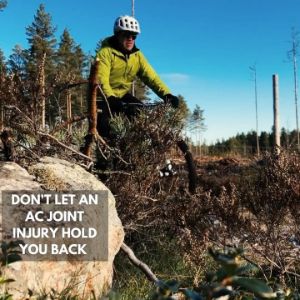Pain in the shoulder joints can be crippling, impacting arm movement and restricting you from performing simple daily tasks. The problem could be loose bodies in the shoulder, a common consequence of sports or work injuries. Loose bodies are pieces of dislodged bone or cartilage trapped in the thin membrane surrounding the shoulder joint (the synovium).
Causes of Loose Bodies
If you participate in sports heavily or have a physically demanding job, you are more susceptible to fractures and other injuries that can dislodge fragments of bone or cartilage. In addition, you could be accelerating the gradual degeneration of the shoulder joint’s cartilage, which leads to osteoarthritis.
Often, individuals with degenerative diseases like osteoarthritis require loose body removal. Other causes include tuberculosis, rheumatoid arthritis, bone and cartilage inflammation, trauma and benign tumors of the synovial membrane.
Loose bodies in the shoulder can cause swelling, pain and the joint to catch and lock. If you think you have loose bodies, Dr. Steven Struhl offers effective loose body treatments at his Westchester and New York City clinics. He is a highly-qualified orthopedic surgeon and shoulder specialist.
Locating the Loose Bodies
At AC Joint Separation, we can perform the following imaging exams to determine if you have loose bodies and which removal procedure to use.
Often X-ray is the first test performed to diagnose and locate loose bodies. An X-ray detects bone and cartilage. Most particles contain bone or cartilage, so this imaging technique is effective.
However, if nothing shows up, the loose bodies are too small and contain minimal bone or cartilage fragments. Therefore, other diagnostic tests such as a CT scan, an MRI or arthrography may be necessary.
- A CAT scan involves X-ray and computer technology, providing a higher-definition image of the affected joint’s bone.
- An MRI uses electromagnetic radio waves instead of radiation, which causes vibrations that can be turned into high-definition images. Bone-less particles can be found with this test.
- Arthrography is rarely used for the shoulder (it’s usually best for small joints like the wrist) but may help see the joint in better detail if other methods aren’t effective. It involves a dye injection to the affected area followed by an X-ray.
Removing the Loose Bodies
At AC Joint Separation, we remove the loose bodies by arthroscopic procedure. Arthroscopy is minimally invasive, requiring only a couple of tiny incisions. The technique used during the surgery depends on the size and location of the loose bodies.
One method involves a suction tip to remove the loose bodies. Another uses a mechanical burr to break the loose bodies into tiny pieces that the body eliminates via enzyme degradation.
If the loose bodies are too large and cannot be removed by arthroscopy, a more extensive surgery called arthrotomy might be necessary. This surgical procedure involves larger incisions for a better view and easier removal.
After your surgery, you might need to participate in a rehabilitation program to restore strength and function to the affected joint. To begin your shoulder recovery journey now, contact AC Joint Separation today to schedule a consultation with Dr. Struhl.
Posted on behalf of Steven Struhl MD





